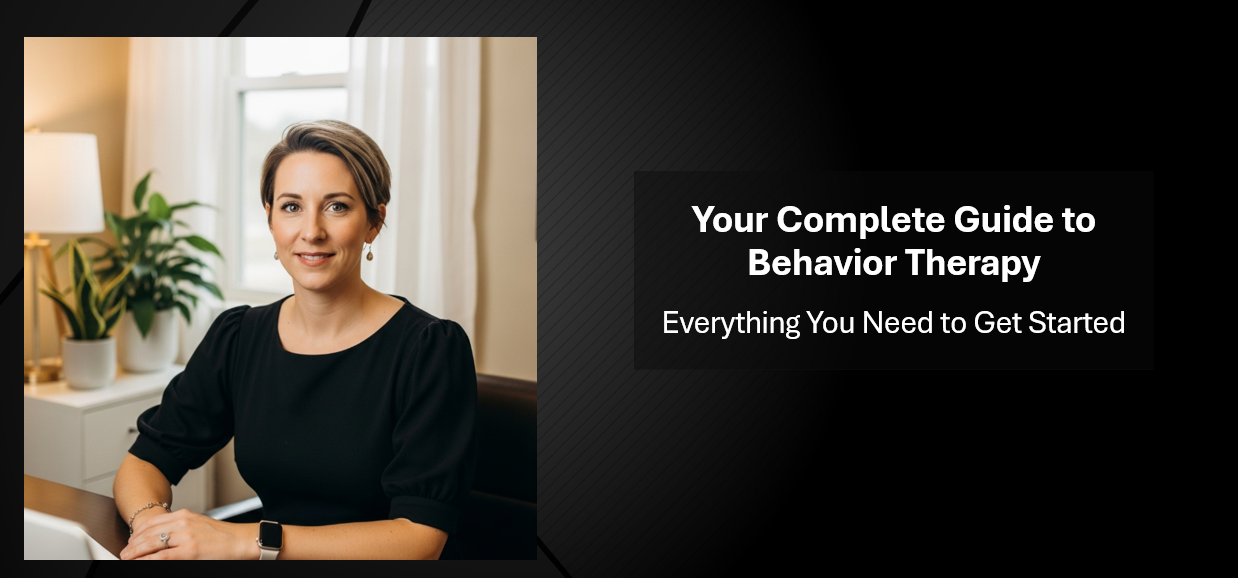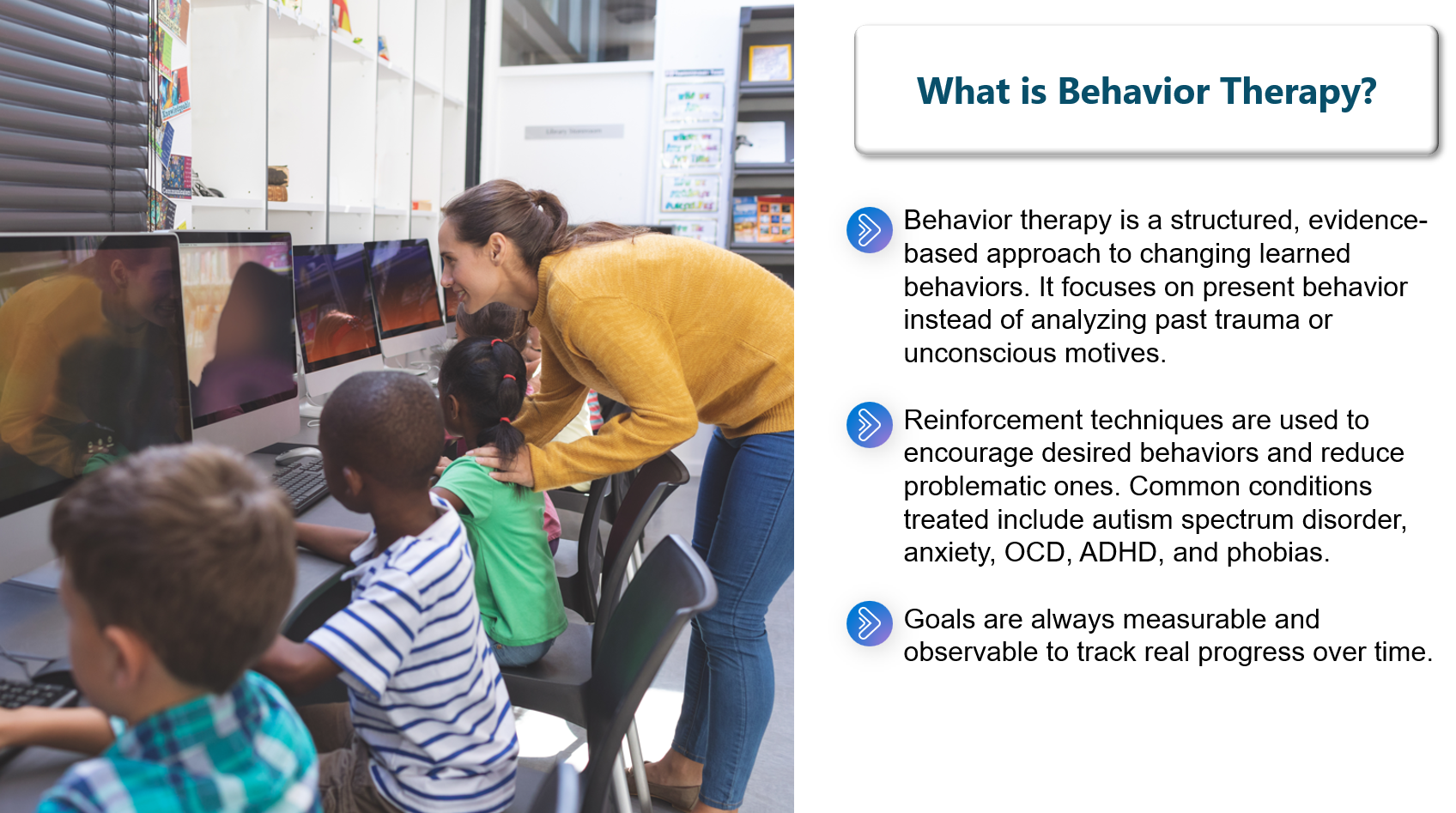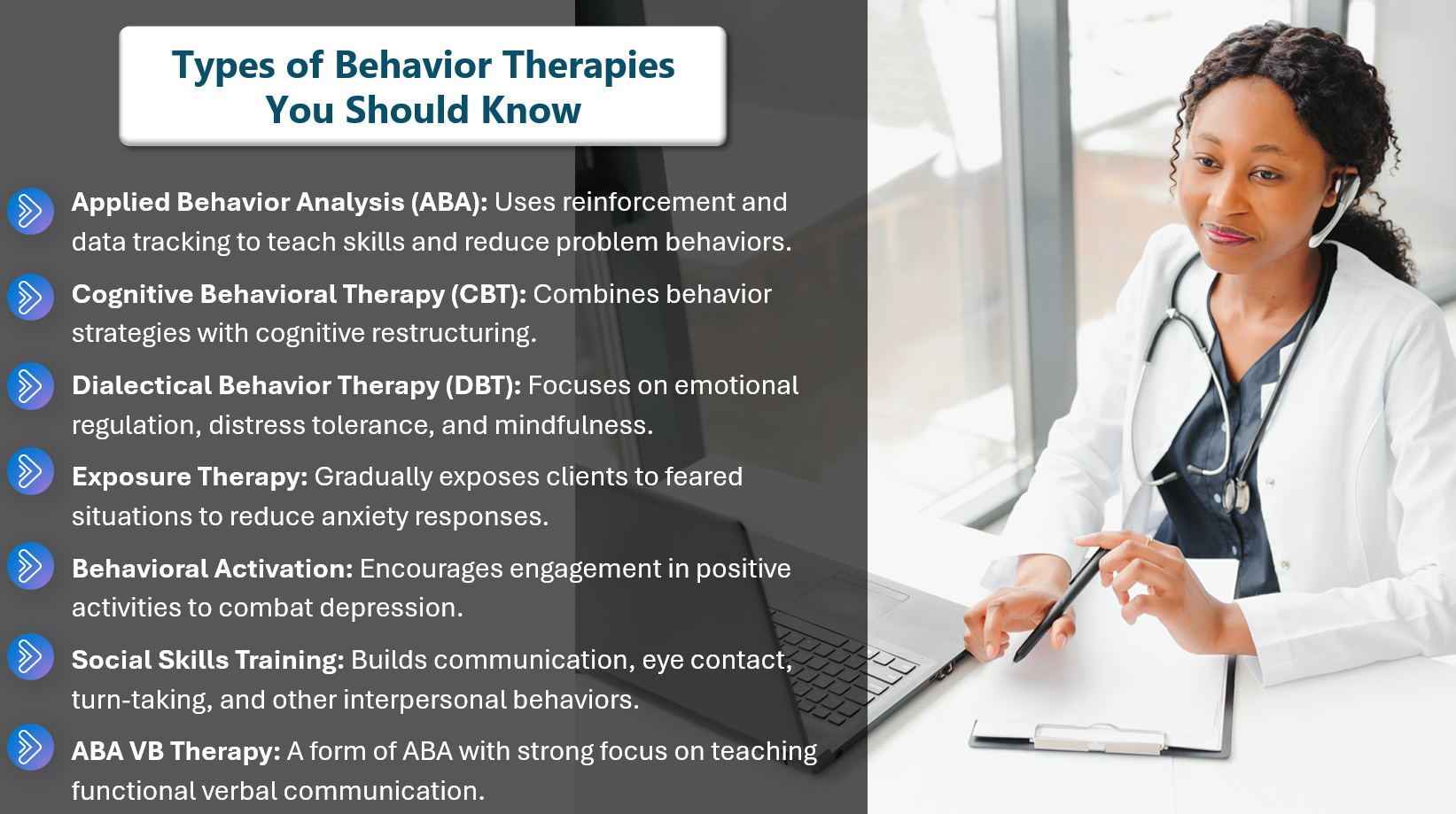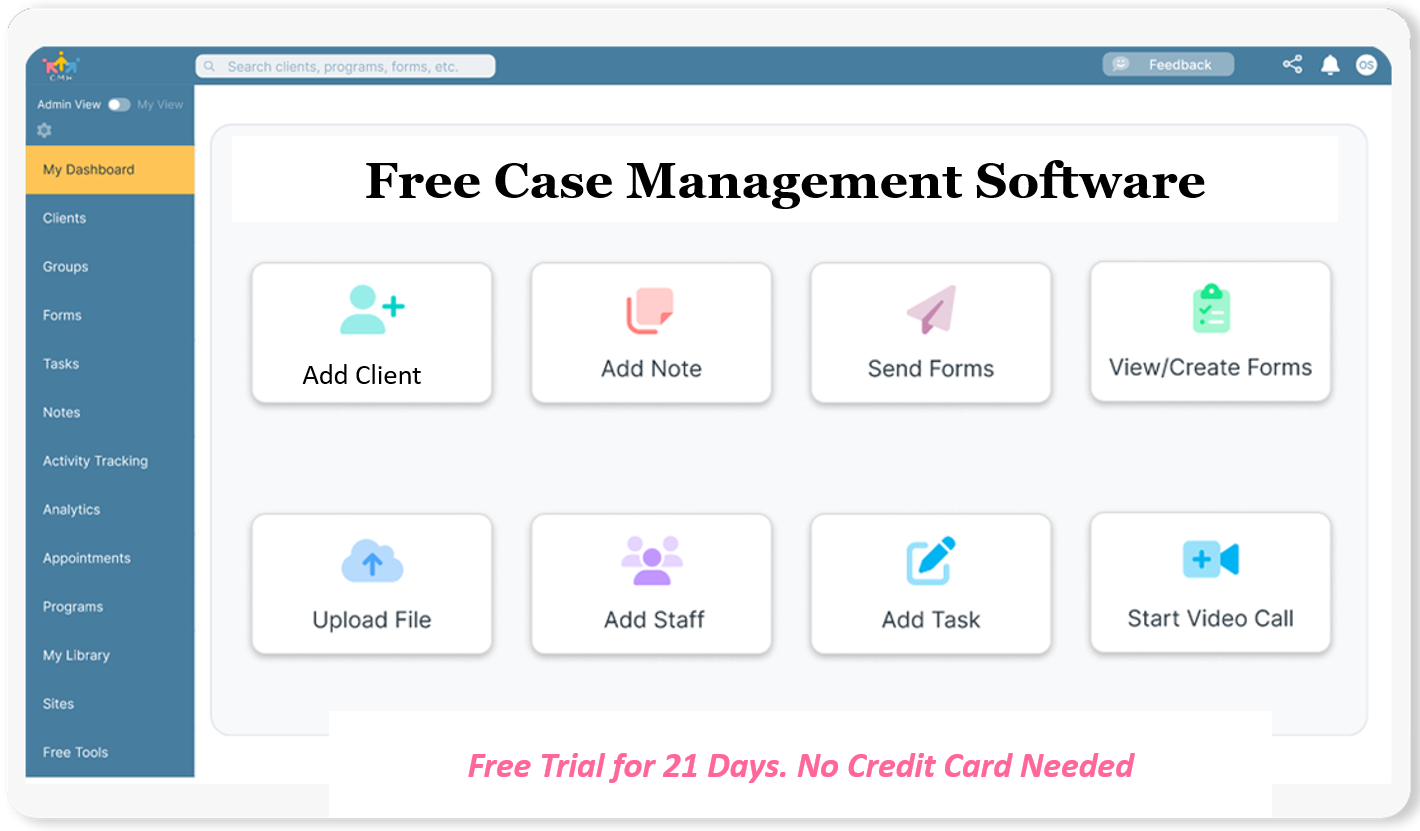A Breakthrough Start: Your Complete Guide to Behavior Therapy
In this guide we are going to show you everything you need to get started on best behavior therapy practices.
Whether you’re just starting out or looking to refine your behavior therapy approach, this guide is here to help you take the next step forward. You’ll get clear insights into best behavior therapy techniques, practical guidance for applying ABA principles, tips for growing your career, and expert advice on everything from certifications to business planning.
You’ll also find a free downloadable checklist and direct links to must-have resources so you can turn ideas into action right away.
Let me tell you a quick story about Sarah. Sarah is a dedicated behavior therapist in her second year of practice.

She constantly feels overwhelmed, juggling multiple cases, trying to remember ABA therapy techniques, second-guessing her client behavioral therapy goals, and spending hours Googling forms and resources late into the night.
What turned it around for her wasn’t another expensive behavior therapy training. It was having a clear, organized, go-to behavioural therapies guide she could reference any time she felt stuck.
This behavioral therapist guide aims to be that turning point for you.
By the end of this article, you’ll feel more equipped, more focused, and more confident in your role as a behavior therapist. You’ll not only understand the therapy models and terminology, but also walk away with behaviour therapist tools and insights you can use immediately in real sessions.
Let’s get started
Watch the videos or read the guide below.
Video Class – Chapter 1
Video Class – Chapter 2
Video Class – Chapter 3
Video Class – Chapter 4
Pro Tip: In behavior therapy, always define target behaviors in specific, observable, and measurable terms. Instead of saying “improve attitude,” describe the behavior you want to see—like “completes tasks without arguing for 3 consecutive days.” This clarity helps track progress accurately and reinforces positive change more effectively.
Table of Contents
This guide is packed with tools, insights, and clarity. Below is a breakdown of what you’ll learn in each section:
- What Is Behavior Therapy?
- Behavior Therapy vs Behavioral Therapy vs Behavioural Therapy: Is There a Difference?
- Types of Behavior Therapies You Should Know
- How To Become a Behavioral Therapist
- Qualifications for ABA Therapists
- Understanding ABA Therapy: History, Materials, and Goals
- Inside the ABA Therapy Session: What It Looks Like
- Key ABA Interview Questions You Should Prepare For
- ABA Therapist Hourly Rate & Business Tips
- Therapist Tools: Materials, Resources & Practice Setup
- Behavioral Psychotherapy vs Psychoanalytic Behavior
- FAQs About Becoming a Behavior Therapist
Pro Tip: Data is a behavior therapist’s best friend. Track behaviors consistently to see what’s working and where adjustments are needed. This not only helps your clients progress faster but also strengthens your confidence in your approach as a behavioural therapist.
What Is Behavior Therapy?
Behavior therapy is a structured, evidence-based approach to helping people change patterns of behavior that are harmful, unproductive, or disruptive. At its core, behavior therapy focuses on the idea that behaviors are learned, and therefore, they can be unlearned or modified using specific strategies.
These strategies are designed to reinforce positive behaviors and reduce those that negatively impact a person’s quality of life.
This form of therapy is often used to treat conditions like anxiety, depression, ADHD, autism spectrum disorders, and obsessive-compulsive disorder. It’s also frequently applied in settings that support children, adolescents, and adults with behavioral challenges. Unlike some therapies that focus on past experiences or unconscious thoughts, behavior therapy is action-oriented and focused on the present.

Behavioral therapists use techniques such as reinforcement, modeling, and skills training to help clients build healthier habits. In many cases, therapists rely on consistent data tracking and measurable goals to ensure progress. This approach helps clients develop self-awareness while also building confidence and independence over time.
Many behavior therapists specialize in Applied Behavior Analysis (ABA), particularly when working with individuals on the autism spectrum. ABA therapy involves breaking down complex behaviors into smaller, teachable steps and reinforcing them through structured sessions.
Whether you’re delivering therapy in a school, clinic, private practice, or home setting, behavior therapy offers flexible methods backed by decades of research and practical success.
Pro Tip: Start with small, measurable goals. Trying to change too many behaviors at once can lead to burnout for both the therapist and the client. Focus on one target behavior at a time and celebrate every win.
Behavior Therapy vs Behavioral Therapy vs Behavioural Therapy: Is There a Difference?
If you’ve been searching online or reading through textbooks, you’ve probably noticed these terms used almost interchangeably: behavior therapy, behavioral therapy, and behavioural therapy.
So what’s the difference?
The short answer is this: there isn’t a difference in meaning. All three refer to the same therapeutic approach focused on changing observable behaviors through evidence-based techniques. The variation lies in spelling and regional usage.
- Behavior Therapy is the more concise, general term.
- Behavioral Therapy is commonly used in the United States and often appears in academic and clinical writing.
- Behavioural Therapy is the British and Canadian spelling, used in publications and practices across the UK, Canada, and other Commonwealth countries.
In professional settings, your choice of spelling often depends on where you practice and who your audience is. If you’re working in the U.S., you’ll likely use “behavioral therapy” when documenting or communicating professionally. But the underlying methods, goals, and philosophy remain the same regardless of spelling.
For therapists, understanding this linguistic nuance is important when researching, writing reports, or applying for jobs abroad. It also helps when you’re reviewing international resources or collaborating with colleagues across borders.
Pro Tip: Positive reinforcement is at the heart of ABA therapy. Whether it’s verbal praise, a favorite toy, a break, or a token toward a larger reward, reinforcers are used to encourage desired behaviors and help them stick over time.
Types of Behavior Therapies You Should Know
Behavior therapy isn’t a one-size-fits-all approach. Over the years, several types of behavior therapies have emerged, each with its own techniques, goals, and areas of application. Understanding these variations helps therapists choose the right method for each client and setting.

Here are the most widely used and effective types of behavior therapies you should be familiar with:
- Applied Behavior Analysis (ABA)
ABA is one of the most structured and research-backed behavior therapies, especially effective in working with children on the autism spectrum. It involves breaking down behaviors into smaller components, using positive reinforcement to shape behavior over time. ABA therapy also includes data collection, goal setting, and progress tracking in a highly systematic way.
- Cognitive Behavioral Therapy (CBT)
Although CBT integrates cognitive elements, it’s still deeply rooted in behavioral principles. It focuses on identifying and changing both unhelpful thoughts and behaviors. CBT is widely used for treating anxiety, depression, trauma, and more, and often includes homework assignments, behavioral experiments, and skill-building exercises.
- Dialectical Behavior Therapy (DBT)
A specialized form of CBT, DBT was originally developed to treat borderline personality disorder but is now used more broadly. It blends behavior therapy techniques with mindfulness and emotional regulation strategies. DBT helps clients tolerate distress, manage intense emotions, and improve interpersonal relationships.
- Behavioral Activation
This therapy helps individuals break cycles of avoidance and inactivity often seen in depression. Clients are encouraged to engage in positive activities and routines, even when motivation is low, to improve mood and reduce depressive symptoms through action.
- Social Skills Training
Behavior therapy is frequently used to teach children and adults the skills they need to communicate, cooperate, and function in social environments. This might involve modeling, role-playing, or feedback to develop and reinforce appropriate behaviors.
- Exposure Therapy
Commonly used to treat phobias, PTSD, and obsessive-compulsive disorder, exposure therapy gradually introduces clients to feared situations or thoughts in a safe, controlled setting. The goal is to reduce avoidance and desensitize the individual to the source of their anxiety.
- ABA VB Therapy (Verbal Behavior)
A branch of ABA, ABA VB therapy places a strong emphasis on teaching language and communication skills. It’s especially useful for non-verbal or minimally verbal children and focuses on the functional use of language in real-world settings.
As a behavioral therapist, you may specialize in one approach or integrate elements from several therapies depending on the needs of your clients. Being familiar with multiple types helps you create a more flexible, customized treatment plan.
Pro Tip: Always match the therapy type to the individual’s developmental level, diagnosis, and personal goals. What works well for one client may not be appropriate for another, so flexibility and continuous assessment are key to success.
How To Become a Behavioral Therapist
Becoming a behavioral therapist is a rewarding path for those who are passionate about helping others build better lives through structured support, skill development, and behavior change. Whether you’re aiming to work in schools, clinics, private practice, or community settings, the journey begins with the right education, training, and credentials.
Here’s a step-by-step overview of how to become a behavioral therapist:
- Earn a Relevant Bachelor’s Degree
Most behavioral therapists begin with a degree in psychology, social work, education, or a related field. This foundational step helps you understand human behavior, mental health, and basic therapeutic techniques.
- Pursue a Master’s Degree (If Required)
While some entry-level roles in behavior therapy may only require a bachelor’s degree (especially in ABA settings), many behavioral therapy positions—especially in clinical settings—require a master’s degree in psychology, applied behavior analysis, counseling, or social work.
- Get Supervised Experience
Hands-on experience is essential. Most certification programs, especially for ABA therapists and behavioral counselors, require hundreds or even thousands of supervised fieldwork hours. This is where you’ll apply what you’ve learned in real-world scenarios under the guidance of experienced professionals.
- Obtain Certification and Licensure
Depending on your focus and location, you may need specific credentials. For example:
- Board Certified Behavior Analyst (BCBA) for those specializing in ABA therapy
- State licensure for behavioral therapists working in clinical mental health settings
- Registration as an RBT (Registered Behavior Technician) for entry-level roles in ABA
- Stay Up to Date with Continuing Education
To maintain your license or certification, you’ll need to complete ongoing professional development. This also ensures you’re up to date on the latest research, ethical standards, and therapy techniques.
- Choose Your Specialty and Setting
You can work with children, teens, or adults in a variety of settings, including:
- Schools
- Mental health clinics
- Autism centers
- Hospitals
- Private practice
- In-home therapy programs
Each environment may require a slightly different skillset, but all share a common focus on supporting clients through structured, evidence-based interventions.
Pro Tip: Not sure which path to take? Shadow a practicing behavioral therapist or sign up for an internship during your studies. Seeing the day-to-day realities of the role can help you choose the right specialization and avoid wasting time on the wrong certification path.
Qualifications for ABA Therapists
Applied Behavior Analysis (ABA) therapy is a highly specialized and structured form of behavior therapy, widely used to support individuals with autism spectrum disorders and other developmental conditions. Because of its scientific rigor and demand for precision, becoming an ABA therapist requires specific qualifications, training, and certifications.
Whether you want to become a frontline Registered Behavior Technician (RBT) or pursue leadership as a Board Certified Behavior Analyst (BCBA), here’s what you need to know:
- Educational Requirements
- RBT (Registered Behavior Technician): Requires a high school diploma or equivalent, plus 40 hours of training in applied behavior analysis.
- BCaBA (Board Certified Assistant Behavior Analyst): Requires a bachelor’s degree and completion of approved coursework in ABA.
- BCBA (Board Certified Behavior Analyst): Requires a master’s degree in psychology, behavior analysis, education, or a related field, along with completion of specific ABA coursework and supervised experience hours.
- Supervised Fieldwork
Supervised experience is essential to becoming a certified ABA therapist. Depending on the certification level, you’ll need to complete between 500 to 2,000 hours of supervised fieldwork, typically under the guidance of a BCBA.
- Pass the Certification Exam
To become a certified ABA therapist:
- RBTs must pass a competency assessment followed by the RBT exam.
- BCaBAs and BCBAs must pass the Behavior Analyst Certification Board (BACB) exam after meeting all educational and fieldwork requirements.
- Maintain Certification
All certified ABA professionals must complete continuing education units (CEUs) and adhere to strict ethical guidelines set by the Behavior Analyst Certification Board (BACB).
- Additional Skills That Strengthen Your Application
- Strong communication and observation skills
- Patience and empathy when working with individuals with behavioral challenges
- Familiarity with ABA therapy materials such as data sheets, reinforcement tools, and visual schedules
These qualifications ensure that ABA therapists are well-prepared to deliver structured, measurable, and effective interventions that help clients make meaningful progress in their behavior and development.
Pro Tip: If you’re just starting out, becoming an RBT is a fast and affordable way to enter the field and gain valuable experience. Many professionals later use this as a stepping stone toward advanced certification as a BCBA.
Understanding ABA Therapy: History, Materials, and Goals
Applied Behavior Analysis (ABA) therapy is one of the most well-researched and widely practiced forms of behavioral therapy. It’s especially known for its effectiveness in supporting individuals with autism, developmental disabilities, and other behavior-related challenges. To use ABA therapy effectively as a behavioral therapist, it’s important to understand its roots, its tools, and the goals that guide each session.
A Brief History of ABA Therapy
ABA therapy has its foundations in the work of psychologist B.F. Skinner, who developed the theory of operant conditioning. In the 1960s and 70s, researchers began applying these principles in structured, measurable ways to support children with autism. The field grew rapidly as studies confirmed that behavior could be shaped, reinforced, and reduced using specific techniques over time.
Today, ABA is considered a gold standard in many therapeutic and educational settings, with thousands of therapists trained around the world to deliver services using data-driven methods.
Common ABA Therapy Materials
ABA therapy is hands-on and highly structured, which means therapists rely on a variety of materials to carry out effective sessions. These include:
- Token boards and reinforcement charts for rewarding positive behavior
- Visual schedules to help clients understand routines and transitions
- Data sheets for tracking behavior frequency, duration, and progress
- Flashcards, toys, or picture cards for teaching communication, identification, and other functional skills
- Timers, clickers, or apps to support time-bound tasks and reinforce focus
Having these materials ready and organized allows the therapist to stay consistent, structured, and responsive to the client’s needs.
Key ABA Therapy Goals
ABA therapy goals are highly individualized but always focus on helping clients build useful, socially significant skills while reducing behaviors that interfere with learning or quality of life. Some common goals include:
- Improving communication skills (e.g., using words or gestures)
- Increasing attention and focus
- Developing daily living skills such as dressing, hygiene, and eating
- Enhancing social interactions and play skills
- Reducing aggressive, self-injurious, or disruptive behaviors
Each goal is broken down into small, teachable steps, and progress is carefully tracked to ensure the client is moving forward.
Therapists frequently collaborate with parents, teachers, and caregivers to ensure consistency across environments. The strength of ABA therapy lies in its ability to be customized, measured, and adjusted as needed based on real-time data.
Pro Tip: Make sure your goals are both measurable and functional. Instead of writing “Improve communication,” specify “Client will request items using 2-word phrases in 80% of opportunities over 5 consecutive sessions.” Clear, trackable goals lead to better outcomes and easier collaboration with families and teams.
Inside the ABA Therapy Session: What It Looks Like
An ABA therapy session might look simple on the surface, but behind every interaction is a well-structured plan designed to promote meaningful behavior change. Whether you’re new to the field or refining your practice, understanding what happens inside a typical ABA session will help you deliver therapy more confidently and effectively.
Session Structure and Flow
Most ABA therapy sessions follow a consistent structure, which helps clients feel secure and ready to engage. A typical session may include:
- Warm-Up and Rapport Building
The therapist greets the client, reviews expectations, and starts with a preferred activity or small talk to build comfort and connection. - Skill-Building Activities
This is the core of the session. The therapist introduces targeted skills—such as identifying objects, following instructions, or practicing social cues—using prompts, reinforcement, and structured repetition. - Data Collection
Throughout the session, the therapist tracks responses in real time using data sheets or digital tools. This includes recording correct responses, errors, prompts used, and behavior incidents. - Behavior Reduction Plans
If there are challenging behaviors (e.g., aggression, non-compliance), the therapist follows a predetermined intervention strategy designed to reduce or redirect the behavior safely and constructively. - Generalization and Play
Skills are practiced in different contexts or through play to help the client generalize what they’ve learned to real-life situations. - Session Wrap-Up and Parent Debrief
At the end of the session, the therapist reviews what went well, shares progress updates with caregivers, and provides suggestions for follow-through at home.
Role of Reinforcement
Positive reinforcement is at the heart of ABA therapy. Whether it’s verbal praise, a favorite toy, a break, or a token toward a larger reward, reinforcers are used to encourage desired behaviors and help them stick over time.
The therapist adjusts reinforcement schedules based on the client’s progress and gradually reduces prompts and rewards as independence increases.
Customizing for the Client
Each ABA session is unique and tailored to the client’s goals, developmental level, and individual preferences. Therapists must stay flexible and responsive, often modifying activities or techniques in the moment while staying aligned with the treatment plan.
Pro Tip: Always come into each session prepared with a clear plan, but stay flexible. Some of the most effective learning moments come from unexpected situations where you pivot in real time to meet the client where they are.
Key ABA Interview Questions You Should Prepare For
ABA therapy professionals often find themselves navigating two types of interviews:
- Job and certification interviews when applying for roles such as RBTs or BCBAs.
- Client intake interviews when meeting families or clients for the first time to assess needs, build trust, and shape treatment goals.
In both scenarios, preparation is key. Whether you’re the one being interviewed or you’re the therapist conducting the intake, knowing what to expect—and how to respond—can set the tone for success.
- ABA Therapy Job Interview Questions
These questions are typically asked by hiring managers to evaluate your understanding of behavioral principles, your experience, and your ability to work in real-world therapy settings.
- What is Applied Behavior Analysis, and how have you used it in practice?
Explain ABA in your own words, referencing reinforcement, behavior reduction, skill acquisition, and data collection.
- How do you manage challenging or aggressive behavior during a session?
Share an example where you used de-escalation strategies, stuck to a behavior intervention plan, and kept safety at the forefront.
- What types of reinforcement strategies do you use?
Discuss how you identify motivating reinforcers and use them strategically to shape behavior and fade dependency over time.
- How do you track and analyze data?
Talk about the tools you use—whether paper data sheets or digital platforms—and how you use trends in the data to guide treatment.
- How do you handle disagreements with parents or team members?
Show that you value collaboration, clear communication, and flexibility while always advocating for the client’s best interest.
- Client Intake & Interview Questions in ABA Therapy
If you’re already a practicing behavioral therapist, you know that the first interview with a client or their caregiver is a critical moment. It sets the tone for the therapy journey and helps define measurable goals.
Here are some questions therapists often ask during client intake sessions:
- What are your main concerns or challenges with your child/client right now?
This open-ended question helps build rapport and gives you insight into the client’s priorities.
- What does a typical day look like at home, school, or work?
Helps you identify patterns, triggers, routines, and opportunities for generalization of skills.
- What are the client’s strengths or preferred activities?
Important for selecting reinforcers and starting therapy from a strength-based perspective.
- Are there specific behaviors you’d like to increase or decrease?
Allows you to translate concerns into measurable goals and shape the behavior plan accordingly.
- Have you received ABA or any other therapies in the past? What worked? What didn’t?
Gives context and sets expectations for the upcoming intervention.
Pro Tip: If you’re conducting an intake, listen more than you speak. Parents and clients often feel overwhelmed or unsure, letting them talk freely first builds trust. Then, shape your questions to guide the conversation toward actionable therapy goals. If you’re preparing for a job interview, practice explaining ABA in clear, non-technical terms. The ability to speak both clinically and conversationally is a powerful skill in this field.
ABA Therapist Hourly Rate & Business Tips
Whether you’re considering a career in ABA therapy or already working in the field, understanding your earning potential—and how to expand it—is crucial. From entry-level RBTs to experienced BCBAs running private practices, the ABA therapist hourly rate can vary widely based on factors like credentials, location, experience, and setting.
Let’s break it down, then explore how to turn your skills into a thriving business.
Average ABA Therapy Hourly Rates
- Registered Behavior Technician (RBT):
- Hourly Rate: $18 to $30
- Setting: Schools, clinics, home-based therapy
- Entry-level professionals with RBT certification often work under the supervision of a BCBA.
- Board Certified Behavior Analyst (BCBA):
- Hourly Rate: $40 to $80+
- Setting: Private practice, supervisory roles, consultations, telehealth
- BCBAs have greater autonomy, can design programs, oversee teams, and often provide direct services or consulting.
- Freelance or Private Practice ABA Therapists:
- Hourly Rate: $60 to $150+
- Professionals who build their own client base or offer telehealth services can command higher rates, especially if they specialize in niche areas or underserved populations.
Note: The ABA therapy hourly rate may also vary based on whether services are funded by insurance, school districts, or private pay. States with higher demand and limited supply of certified professionals often offer more competitive compensation.
Business Tips for Independent ABA Therapists
If you’re planning to go beyond hourly employment and build your own business or practice, here are a few practical steps to get started:
- Create an ABA Therapy Business Plan
A strong business plan outlines your services, pricing, target population, marketing strategy, and financial projections. Whether you plan to work solo or hire a team, this roadmap keeps you focused and prepared.
- Know Your Niche and Target Audience
Are you focused on early intervention? School-age children? Teens with behavioral challenges? Specializing can help you stand out and attract the right clients faster.
- Understand Billing and Insurance
If you want to bill insurance, you’ll need to go through credentialing with each provider. Alternatively, many private pay clients are willing to pay for a premium experience—especially if you make sessions flexible, personalized, and outcomes-focused.
- Invest in Tools and Materials
Prepare a toolkit of effective ABA therapy materials (token boards, data trackers, visual aids, etc.) and consider using practice management software to streamline scheduling, billing, and progress tracking.
- Build a Referral Network
Partner with schools, pediatricians, speech therapists, and occupational therapists in your area. A strong referral pipeline can be the lifeblood of your business.
Pro Tip: Don’t undervalue your expertise. Even if you’re just starting out, pricing too low can hurt your credibility. Instead, position yourself with professional branding, clear service offerings, and testimonials that show your impact. Quality clients will pay for quality care.
Behavior Therapist Tools: Materials, Resources & Practice Setup
Delivering effective behavior therapy takes more than just knowledge—it requires the right tools, materials, and systems to stay organized, track progress, and engage clients. Whether you’re working in a clinic, a school, a client’s home, or running your own practice, your setup can make a big difference in your success as a behavior therapist.
This section walks you through the essentials every behavioral therapist should have ready—from session materials to digital resources to practice management strategies.
Essential ABA Therapy Materials
These hands-on tools help reinforce learning, keep sessions engaging, and track progress accurately:
- Token Boards – Visual reinforcement tools that motivate clients by showing progress toward a reward
- Visual Schedules – Step-by-step images or icons to help clients understand routines and transitions
- Flashcards & Picture Cards – Useful for teaching language, matching, categorization, and emotion recognition
- First-Then Boards – Great for promoting compliance by sequencing preferred and non-preferred activities
- Reinforcers – Toys, snacks, fidgets, or digital rewards personalized to each client’s preferences
- Timers – Used to build focus, transition between tasks, or measure time-on-task
- Behavior Tracking Sheets or Apps – To log data in real time and make decisions based on trends
Digital Tools & Online Resources
In today’s therapy world, digital tools can save time, improve communication, and elevate your professionalism:
- Practice Management Software – Platforms like the CMH All-in-One Case Management Software, CentralReach, Accupoint, or free ABA data apps help you schedule sessions, track goals, manage billing, and communicate with families
- Data Collection Tools – Google Sheets, Excel, or CMH All-in-One Case Management Software for session logs, client notes including Soap Notes, and analytics
- Parent & Therapist Training Videos – YouTube channels, course platforms, and professional associations often offer free or low-cost continuing education
- Printable Resources & Templates – Websites like CaseManagementHub.org and SocialWorkPortal.com offer ready-to-use behavior tracking forms, token boards, and progress templates
Setting Up Your Practice Space
Whether you’re mobile or office-based, your behavior therapy practice environment should be structured, flexible, and welcoming. Consider the following setup tips:
- Portability: If you travel to homes or schools, keep a mobile therapy bag with session materials neatly organized.
- Consistency: Use the same routines and tools each session to build familiarity and reduce anxiety for clients.
- Safety & Accessibility: Make sure all materials are age-appropriate, safe, and easy for clients to use independently where possible.
Pro Tip: Less is more. Start with a small set of versatile tools, like a token board, reinforcers, and a visual schedule, and build from there based on each client’s specific needs. Overloading your sessions with too many materials can overwhelm both you and the client.
Additional Behavioral Free Trial Forms and Templates
Sign up today to our Case Management Hub software for access to the following behavior forms and templates:
Free Trial (14 Days)
- Behavior Intervention Plan (BIP) Template
- Behavior Session Attendance Log
- Behavior Supervision Log (RBT, BCaBA)
- Behavior ABA Intake Form
- Behavior ABC Intake Form
- Behavior Care Discharge Summary Template
- Behavior Care Parent & Caregiver Training Log
- Behavior Client Consent for Treatment & Data Sharing
- Behavior Data Collection Sheets (Excel)
- Behavior Initial Authorization Request Form (Insurance)
- Behavioral Incident Report Form
- Functional Behavior Assessment (FBA) Intake Form
- Behavior Treatment Plan Template
Free Downloadable
- Free ABA Tasks Checklist
- Free ABC Behavior Form
- Free Behavioral Assessment ABA Checklist
- Free Measurement Techniques in ABA
Pro Tip: Always pair yourself with reinforcement before demands.
Before giving instructions or placing demands on a client, take a few moments to engage in preferred activities, offer positive attention, or provide access to reinforcers. This “pairing” process helps build rapport, reduces resistance, and increases the likelihood of cooperation. The stronger the positive association with the therapist, the more effective the sessions become.
Behavioral Psychotherapy vs Psychoanalytic Behavior
At first glance, behavioral psychotherapy and psychoanalytic behavior might seem related—they both deal with human behavior, after all. But in practice, they’re built on very different foundations. Understanding the difference is key for any behavior therapist looking to choose the right approach, collaborate across disciplines, or communicate clearly with clients and families.
What Is Behavioral Psychotherapy?
Behavioral psychotherapy is an umbrella term that includes a wide range of therapy techniques rooted in behaviorism. It focuses on identifying specific behaviors, understanding what reinforces them, and using structured interventions to change them.
The approach is:
- Present-focused
- Data-driven and measurable
- Rooted in learning theory (e.g., operant and classical conditioning)
Techniques often include exposure therapy, behavior modification plans, reinforcement schedules, skills training, and components of CBT. It’s commonly used for treating conditions like anxiety, depression, phobias, ADHD, autism, and OCD.
Behavioral psychotherapy empowers clients by teaching them practical strategies and giving them tools to change how they respond to situations in real life.
What Is Psychoanalytic Behavior?
Psychoanalytic behavior is not a standard term used in mainstream clinical practice. It typically refers to the integration—or contrast—of psychoanalytic theory with observable behavioral responses. Traditional psychoanalytic therapy is deeply rooted in uncovering unconscious conflicts, often tracing behaviors back to early childhood experiences, dreams, and internal motivations.
It is:
- Insight-focused and reflective
- Centered on unconscious drives and inner conflict
- Less structured and slower-paced than behavior therapy
Unlike behavioral psychotherapy, psychoanalytic approaches do not emphasize data collection or measurable goals. Instead, they aim to foster insight over time by exploring hidden emotional patterns and early life experiences.
When Do These Approaches Intersect?
In rare cases, some therapists blend psychoanalytic concepts with behavioral methods. However, they typically stay separate in practice due to their differing philosophies. For example, a client with anxiety might see a behavioral therapist to build coping skills, while also seeing a psychoanalyst to explore deeper emotional conflicts. This can be effective when done collaboratively and with clearly defined roles.
Pro Tip: When talking with clients or colleagues, be clear about what your approach offers. Behavioral psychotherapy is action-oriented and measurable—ideal for clients who want to see practical changes. If a client is looking for deep self-exploration or insight into their past, a referral to a psychoanalyst or psychodynamic therapist might be more appropriate.
FAQs About Becoming a Behavior Therapist
To wrap up this guide, here are answers to some of the most common questions asked by aspiring and practicing behavior therapists. Whether you’re new to the field or expanding your practice, these FAQs offer clarity on career paths, tools, and expectations in behavioral therapy.
What’s the difference between behavior therapy, behavioral therapy, and behavioural therapy?
There’s no difference in meaning - just in spelling and regional usage. Behavior therapy and behavioral therapy are more common in the U.S., while behavioural therapy is the British spelling. All refer to therapeutic methods focused on reinforcing positive behaviors and reducing harmful ones.
How do I become a certified ABA therapist?
Start by earning a degree in psychology, education, or a related field. Entry-level positions like Registered Behavior Technician (RBT) require a high school diploma and 40 hours of ABA training. For more advanced roles like Board Certified Behavior Analyst (BCBA), you’ll need a master’s degree, supervised fieldwork, and to pass the BACB exam.
What are common ABA therapy goals?
Common goals in ABA therapy vary depending on the individual’s needs, but they typically focus on improving communication, enhancing daily living skills, increasing attention span, reducing problem behaviors, and teaching social interaction. These goals are always written in measurable, actionable terms so that both therapists and families can clearly see progress over time. For example, a goal might involve helping a child request a snack using a full sentence or teaching a teenager how to manage transitions between tasks more independently. The success of ABA therapy relies on breaking down these goals into small steps and consistently tracking outcomes.
What materials do I need for an ABA therapy session?
Every ABA therapy session should be structured with materials that align with the client's goals, developmental level, and preferences. Commonly used items include token boards for reinforcement, visual schedules to guide routines, flashcards to build language or social skills, and reinforcers like toys, snacks, or digital rewards. Therapists also need reliable data collection tools - these could be printed sheets or digital apps - to track client performance during the session. The key is to keep your materials organized, portable, and tailored to what works best for each individual client.
How much do ABA therapists make per hour?
The hourly rate for ABA therapists depends on several factors including your certification level, years of experience, and the environment in which you work. Entry-level therapists such as Registered Behavior Technicians (RBTs) often earn between $18 and $30 per hour, while Board Certified Behavior Analysts (BCBAs) can make $40 to $80 per hour or more. Those running their own practices or offering consulting services independently may earn upwards of $100 per hour. Rates also vary by location, insurance billing policies, and client demographics, so it's important to research local trends and set rates that reflect your expertise and value.
Note: Content on this website (casemanagementhub.org) is copyrighted and protected under applicable copyright laws. Unauthorized reproduction, distribution, or use of any content from this Case Management Hub website, without explicit written permission, is strictly prohibited. Read Terms of Use.
Disclaimer: Case Management Hub is an educational resource site. Our content is not medical advice. Always consult a licensed professional for personal guidance. Use of this site does not create a provider-patient relationship. Do not send us personal health information. Read our full disclaimer here: Case Management Hub Disclaimer.
Image source: Adobe stock image














